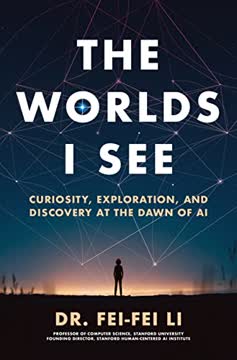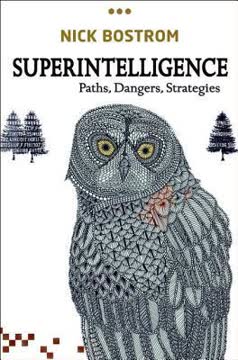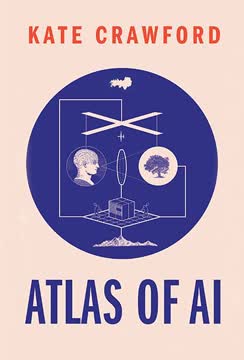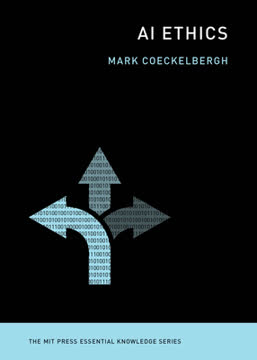نکات کلیدی
1. نگاه کدگذاری شده: کشف تعصب در سیستمهای هوش مصنوعی
"پیشفرضها بیطرف نیستند. آنها اغلب نگاه کدگذاری شده را منعکس میکنند - ترجیحات کسانی که قدرت انتخاب موضوعات مورد تمرکز را دارند."
نگاه کدگذاری شده به این معناست که چگونه اولویتها، ترجیحات و تعصبات کسانی که فناوری را ایجاد میکنند میتواند از طریق تبعیض و حذف آسیب برساند. جوی بوالاموینی این مفهوم را در حین کار بر روی پروژه تشخیص چهره در MIT کشف کرد، جایی که مجبور بود برای شناسایی چهرهاش توسط سیستم، ماسک سفید بپوشد. این تجربه او را به تحقیق درباره تعصب در سیستمهای هوش مصنوعی، بهویژه در فناوریهای تشخیص چهره، سوق داد.
یافتههای کلیدی:
- سیستمهای هوش مصنوعی اغلب در شناسایی افراد با پوست تیرهتر و زنان عملکرد ضعیفی دارند
- مجموعه دادههای مرجع که برای آموزش مدلهای هوش مصنوعی استفاده میشوند، اغلب به سمت مردان با پوست روشنتر متمایل هستند
- این تعصبات میتوانند به پیامدهای واقعی منجر شوند، از دستگیریهای نادرست تا فرصتهای از دست رفته
تحقیقات بوالاموینی نشان داد که سیستمهای تحلیل چهره شرکتهای بزرگ فناوری دارای تفاوتهای قابل توجهی در دقت بر اساس نوع پوست و جنسیت هستند، با نرخ خطا تا 34.4% بین مردان روشنپوست و زنان تیرهپوست.
2. از پروژه هنری تا جنبش جهانی: تولد لیگ عدالت الگوریتمی
"من نمیخواستم عقبنشینی کنم. یک دانشجوی تحصیلات تکمیلی که در برابر غولهای فناوری قرار میگیرد، مسیر معمولی نبود، اما کدنویسی با چهره سفید برای دیده شدن توسط ماشین هم نبود."
لیگ عدالت الگوریتمی (AJL) از پروژه پایاننامه کارشناسی ارشد بوالاموینی در MIT شکل گرفت. آنچه به عنوان یک نصب هنری برای بررسی محدودیتهای فناوری تشخیص چهره آغاز شد، به یک جنبش جهانی برای پاسخگویی و عدالت الگوریتمی تبدیل شد.
ماموریت AJL:
- افزایش آگاهی درباره تأثیر تعصب هوش مصنوعی
- حمایت از سیستمهای هوش مصنوعی فراگیرتر و عادلانهتر
- توسعه ابزارها و روشهایی برای بررسی تعصب در سیستمهای هوش مصنوعی
- تعامل با سیاستگذاران و رهبران صنعت برای ترویج توسعه مسئولانه هوش مصنوعی
کار این سازمان بر تصمیمات سیاستی، شیوههای شرکتی و گفتمان عمومی درباره اخلاق هوش مصنوعی تأثیر گذاشته است، نشاندهنده قدرت ترکیب تحقیقات دانشگاهی با فعالیت و هنر.
3. ممیزیهای الگوریتمی: افشای نقصها در محصولات تجاری هوش مصنوعی
"حتی اگر پروژه کلاسی من روی من کار نمیکرد؟ همکلاسیهای روشنپوست من به نظر میرسید از استفاده از آن لذت میبرند. و البته، ممکن است مزیتی در عدم شناسایی چهره فرد وجود داشته باشد، با توجه به پیامدهای ردیابی افراد توسط دوربینها و خطرات نظارت گسترده."
ممیزیهای الگوریتمی ارزیابیهای سیستماتیک سیستمهای هوش مصنوعی برای شناسایی تعصبات و تفاوتهای عملکردی در گروههای جمعیتی مختلف هستند. پروژه "سایههای جنسیتی" بوالاموینی یک ممیزی الگوریتمی پیشگام بود که شکافهای دقت قابل توجهی را در سیستمهای طبقهبندی جنسیت تجاری افشا کرد.
یافتههای کلیدی ممیزی سایههای جنسیتی:
- همه سیستمهای آزمایش شده در شناسایی زنان با پوست تیرهتر بدترین عملکرد را داشتند
- بزرگترین شکاف دقت 34.4% بین مردان روشنپوست و زنان تیرهپوست بود
- ممیزی نشان داد که حتی محصولات هوش مصنوعی شرکتهای فناوری پیشرو دارای تعصبات قابل توجهی هستند
پروژه سایههای جنسیتی و ممیزیهای بعدی منجر به بهبود در سیستمهای هوش مصنوعی تجاری و افزایش آگاهی از نیاز به مجموعه دادههای آزمایشی متنوع و روشهای ارزیابی دقیق شده است.
4. قدرت ممیزیهای برانگیزاننده: انسانیسازی تأثیر هوش مصنوعی
"آیا ماشینها میتوانند ملکههای من را همانطور که من آنها را میبینم ببینند؟ آیا ماشینها میتوانند مادربزرگهای ما را همانطور که ما آنها را میشناختیم ببینند؟"
ممیزیهای برانگیزاننده از بیان هنری و روایتهای شخصی برای نشان دادن تأثیر انسانی تعصب الگوریتمی استفاده میکنند. قطعه شعر گفتاری بوالاموینی "هوش مصنوعی، آیا من زن نیستم؟" نمونهای برجسته است که نشان میدهد چگونه سیستمهای هوش مصنوعی تصاویر زنان برجسته سیاهپوست را به اشتباه طبقهبندی کردند.
تأثیر ممیزیهای برانگیزاننده:
- انسانیسازی پیامدهای تعصب هوش مصنوعی
- رسیدن به مخاطبان گستردهتر فراتر از محافل دانشگاهی
- الهامبخشی به اقدام و تغییر سیاست
ویدئوی "هوش مصنوعی، آیا من زن نیستم؟" به صورت ویروسی منتشر شد و در مستند "تعصب کدگذاری شده" به نمایش درآمد، کمک به افزایش آگاهی عمومی درباره تعصب هوش مصنوعی و پیامدهای واقعی آن.
5. مبارزه با حذف: تقویت صداهای حاشیهنشین در فناوری
"سکوت درباره یافتههایم مانع از آسیب نمیشد، زیرا این سیستمها در حال توسعه بودند. صحبت کردن من فرصتی برای در نظر گرفتن مسیرهای جایگزین، از جمله عدم استفاده، فراهم کرد."
مبارزه با حذف در هوش مصنوعی و فناوری شامل تقویت فعالانه صداهای حاشیهنشین و به چالش کشیدن وضعیت موجود است. تجربیات بوالاموینی با حذف رسانهای و موانع دانشگاهی اهمیت دیدگاههای متنوع در تحقیق و توسعه هوش مصنوعی را برجسته میکند.
استراتژیهای مبارزه با حذف:
- همکاری با و حمایت از پژوهشگران و متخصصان کمنماینده
- استفاده از پلتفرمهای رسانهای برای برجستهسازی صداها و تجربیات متنوع
- به چالش کشیدن نهادها و شرکتها برای پرداختن به تعصبات سیستماتیک
کار بوالاموینی با مستند "تعصب کدگذاری شده" و تلاشهای حمایتی او به جلب توجه به مشارکتهای زنان و افراد رنگینپوست در اخلاق و تحقیق هوش مصنوعی کمک کرده است.
6. فراتر از دانشگاه: تعامل با سیاستگذاران و عموم مردم
"کنگره کاری در این باره انجام خواهد داد."
تعامل با سیاستگذاران برای ترجمه یافتههای تحقیقاتی به تغییرات واقعی ضروری است. شهادتهای بوالاموینی در کنگره و کار او با آژانسهای دولتی نشاندهنده تأثیر پژوهشگران بر تصمیمات سیاستی است.
تعاملات کلیدی سیاستی:
- شهادت در کنگره درباره فناوری تشخیص چهره
- مشارکت در توسعه منشور حقوق هوش مصنوعی
- حمایت از تلاشهای محلی برای تنظیم استفاده از تشخیص چهره توسط نیروهای انتظامی
این تلاشها منجر به افزایش نظارت بر سیستمهای هوش مصنوعی، پیشنهادات قانونی و تغییرات سیاستی در سطوح مختلف دولتی شده است.
7. هزینههای شمول و حذف در توسعه هوش مصنوعی
"هزینههای شمول و هزینههای حذف باید در طراحی و استقرار سیستمهای هوش مصنوعی در نظر گرفته شوند."
متعادلسازی شمول و حذف در توسعه هوش مصنوعی نیازمند بررسی دقیق مزایا و آسیبهای بالقوه است. در حالی که مجموعه دادههای متنوع میتوانند عملکرد هوش مصنوعی را بهبود بخشند، ممکن است نظارت و کنترل گستردهتری را نیز ممکن سازند.
ملاحظات:
- بهبود دقت هوش مصنوعی میتواند کاربردهای مفید را افزایش دهد (مثلاً تشخیصهای پزشکی)
- تشخیص چهره دقیقتر میتواند نظارت گسترده را نیز ممکن سازد
- حذف گروههای خاص از مجموعه دادهها ممکن است حریم خصوصی را حفظ کند اما منجر به عملکرد ضعیفتر برای آن گروهها شود
بوالاموینی از رویکردی دقیق حمایت میکند که پیامدهای اجتماعی گستردهتر سیستمهای هوش مصنوعی را در نظر بگیرد، به جای تمرکز صرف بر معیارهای عملکرد فنی.
8. به سوی عدالت الگوریتمی: از تحقیق تا تغییرات واقعی
"ما به قوانین نیاز داریم. در طول سالها پیشنویس قوانین درباره پاسخگویی الگوریتمی، فناوریهای بیومتریک از راه دور و حریم خصوصی دادهها معرفی شده است. با افزایش آگاهی درباره تأثیر هوش مصنوعی بر زندگی ما، باید بدانیم که نهادهای دولتی ما از حقوق مدنی ما محافظت خواهند کرد، صرفنظر از چگونگی تکامل فناوری."
عدالت الگوریتمی نیازمند رویکردی چندوجهی است که تحقیق، حمایت، تغییر سیاست و تعامل عمومی را ترکیب کند. سفر بوالاموینی از دانشجوی تحصیلات تکمیلی به اخلاقگرای تأثیرگذار هوش مصنوعی نشاندهنده پتانسیل افراد برای ایجاد تغییرات سیستماتیک است.
اجزای کلیدی مبارزه برای عدالت الگوریتمی:
- تحقیقات دقیق و ممیزیهای سیستمهای هوش مصنوعی
- کمپینهای آموزش عمومی و آگاهیبخشی
- همکاری با سیاستگذاران و رهبران صنعت
- حمایت از تلاشهای مردمی و سازماندهی جامعه
انتشار منشور حقوق هوش مصنوعی و افزایش آگاهی عمومی از مسائل اخلاقی هوش مصنوعی نشاندهنده پیشرفت است، اما نظارت و حمایت مداوم برای اطمینان از توسعه و استقرار سیستمهای هوش مصنوعی به گونهای که حقوق بشر را رعایت کرده و برابری را ترویج کند، ضروری است.
آخرین بهروزرسانی::
FAQ
What's Unmasking AI about?
- Exploration of AI and Society: Unmasking AI by Joy Buolamwini examines the intersection of artificial intelligence and social justice, focusing on how AI can perpetuate biases and discrimination.
- Personal Narrative: The book combines Buolamwini's personal experiences with rigorous research, detailing her journey as a researcher and activist in the field of algorithmic justice.
- Coded Gaze Concept: A central theme is the "coded gaze," which refers to how the biases of technology creators can be embedded in AI systems, leading to harmful outcomes.
- Call to Action: Buolamwini emphasizes the need for collective action to ensure AI serves humanity equitably, advocating for algorithmic justice and diverse representation in tech development.
Why should I read Unmasking AI?
- Timely and Relevant Topic: As AI technologies become more integrated into daily life, understanding their implications is crucial. Buolamwini's insights provide a necessary critique of these systems.
- Personal and Engaging Narrative: The book combines storytelling with research, making complex topics accessible. Buolamwini's journey offers inspiration and motivation for readers.
- Empowerment Through Knowledge: Reading this book equips individuals with the knowledge to question and challenge the status quo in technology, encouraging critical thinking about societal structures.
- Insightful Perspective: It provides a unique viewpoint from a leading voice in algorithmic justice, essential for anyone interested in technology's impact on society.
What are the key takeaways of Unmasking AI?
- AI Reflects Human Bias: AI systems are not neutral; they reflect the biases of their creators, leading to real-world consequences for marginalized groups.
- Importance of Diverse Representation: Buolamwini argues for the necessity of diverse voices in technology development to ensure AI serves all communities fairly.
- Call to Action: The book urges readers to engage in conversations about AI and its societal impacts, advocating for algorithmic justice and shaping the future of technology.
- Collective Action for Change: Buolamwini emphasizes the need for a united front against harmful AI practices, encouraging participation in movements for algorithmic justice.
What are the best quotes from Unmasking AI and what do they mean?
- "The coded gaze describes the ways...": This quote highlights how biases can be embedded in AI systems, leading to discrimination against marginalized groups.
- "We cannot have racial justice...": It underscores the urgent need for ethical considerations in AI development, particularly in sensitive areas like law enforcement.
- "AI will not solve poverty...": Buolamwini emphasizes that technological solutions cannot address systemic societal issues without addressing underlying social and economic structures.
- "Your silence will not protect you.": This quote underscores the importance of speaking out against injustices, particularly in the context of AI and technology.
How does Joy Buolamwini define the "coded gaze" in Unmasking AI?
- Definition of Coded Gaze: The "coded gaze" is how technology reflects the biases of its creators, leading to harmful outcomes for marginalized communities.
- Examples of Coded Gaze: Buolamwini shares personal anecdotes, such as her experience with facial recognition technology that failed to recognize her dark-skinned face.
- Broader Implications: The concept extends beyond race and gender, encompassing various forms of discrimination, including ableism and ageism.
- Call for Critical Examination: Buolamwini calls for a critical examination of technology to ensure it serves all communities equitably.
What is algorithmic bias, as defined in Unmasking AI?
- Definition of Algorithmic Bias: It refers to the systematic and unfair discrimination that occurs when AI systems produce different outcomes for different demographic groups.
- Real-World Implications: Buolamwini's research shows how algorithmic bias can lead to misidentification and wrongful arrests, particularly for people of color.
- Need for Accountability: Addressing algorithmic bias requires transparency and accountability from tech companies, with rigorous testing and auditing of AI systems.
- Impact on Society: The book provides examples of how these biases manifest in technologies like facial recognition, affecting marginalized communities disproportionately.
What are the implications of AI technologies on marginalized communities as discussed in Unmasking AI?
- Discrimination in AI Systems: AI technologies, particularly facial recognition, can lead to discrimination against marginalized groups, often misidentifying or not recognizing individuals.
- Real-World Consequences: Instances of AI failures have resulted in wrongful arrests and other serious repercussions for individuals from marginalized communities.
- Need for Ethical AI: Buolamwini advocates for ethical AI systems that prioritize the needs and rights of all individuals, emphasizing inclusive data and diverse representation.
- Urgent Accountability: The book underscores the urgent need for accountability in AI development to prevent discrimination and harm.
How does Unmasking AI address the issue of data collection and representation?
- Critique of Data Practices: Buolamwini critiques data collection practices that prioritize convenience over inclusivity, often lacking representation of diverse populations.
- Importance of Diverse Datasets: The book emphasizes the need for datasets that accurately reflect societal diversity to prevent biased outcomes in AI systems.
- Call for Transparency: Buolamwini urges tech companies to disclose data sourcing and demographics, essential for building trust and accountability in AI technologies.
- Impact on AI Development: Without diverse representation in data, AI systems will continue to perpetuate existing inequalities, highlighting the need for change.
How does Joy Buolamwini's work contribute to the fight for algorithmic justice?
- Founding the Algorithmic Justice League: Buolamwini established the organization to raise awareness about AI bias and advocate for equitable technology.
- Research and Activism: Her work combines academic research with grassroots activism, making her a prominent figure in the movement for algorithmic justice.
- Influencing Policy: Buolamwini's advocacy has led to significant discussions around AI regulation, including calls for moratoriums on facial recognition use by law enforcement.
- Community Engagement: She emphasizes the importance of community engagement in addressing AI harms, ensuring that affected voices are heard.
What is the significance of the "Gender Shades" project mentioned in Unmasking AI?
- Research on Facial Recognition: The "Gender Shades" project examined facial recognition systems' performance across demographic groups, revealing significant accuracy disparities.
- Impact on Industry Standards: The findings influenced major tech companies to reconsider practices and improve algorithms, prompting discussions about AI ethics.
- Raising Awareness: The project catalyzed broader conversations about representation and bias in AI, highlighting the need for diverse datasets and inclusive practices.
- Influence on Policy: It has served as a foundation for advocating policy changes to address algorithmic bias and ensure ethical AI development.
How does Unmasking AI propose solutions for algorithmic bias?
- Advocacy for Algorithmic Justice: Buolamwini calls for ethical considerations in AI development, encouraging conversations about societal impacts and equitable solutions.
- Diverse Representation in Tech: The book highlights the importance of including diverse voices in technology development to ensure fair AI systems.
- Policy Recommendations: Buolamwini suggests collaboration between policymakers and tech companies to create regulations addressing algorithmic bias.
- Accountability and Transparency: Emphasizes the need for accountability and transparency in AI systems to prevent discrimination and harm.
How can individuals contribute to the movement for algorithmic justice?
- Educate Yourself and Others: Buolamwini encourages learning about AI and its societal impacts, sharing knowledge to build an informed community.
- Advocate for Change: Participate in advocacy efforts, such as supporting legislation addressing AI bias and discrimination, and engage with local organizations.
- Challenge Harmful Practices: Question and challenge AI technologies that perpetuate harm, holding companies accountable for a just technological landscape.
- Empowerment Through Action: Individuals can contribute to a more equitable future by actively participating in movements for algorithmic justice.
نقد و بررسی
کتاب آشکارسازی هوش مصنوعی به خاطر بررسی قابل دسترس خود از تعصب و اخلاق در هوش مصنوعی مورد تحسین قرار گرفته است. خوانندگان از سفر شخصی بوالاموینی و بینشهای او در دنیای فناوری قدردانی میکنند. بسیاری این کتاب را آموزنده و اندیشهبرانگیز میدانند و بر اهمیت پرداختن به تعصبهای الگوریتمی تأکید میکنند. برخی از منتقدان به سبک یادداشتگونهی کتاب اشاره کرده و آرزو دارند که عمق فنی بیشتری در آن وجود داشته باشد. بهطور کلی، این کتاب به عنوان یک مشارکت حیاتی در درک تأثیر اجتماعی هوش مصنوعی دیده میشود، هرچند نظرات در مورد تعادل بین روایت شخصی و محتوای فنی متفاوت است.
Similar Books












